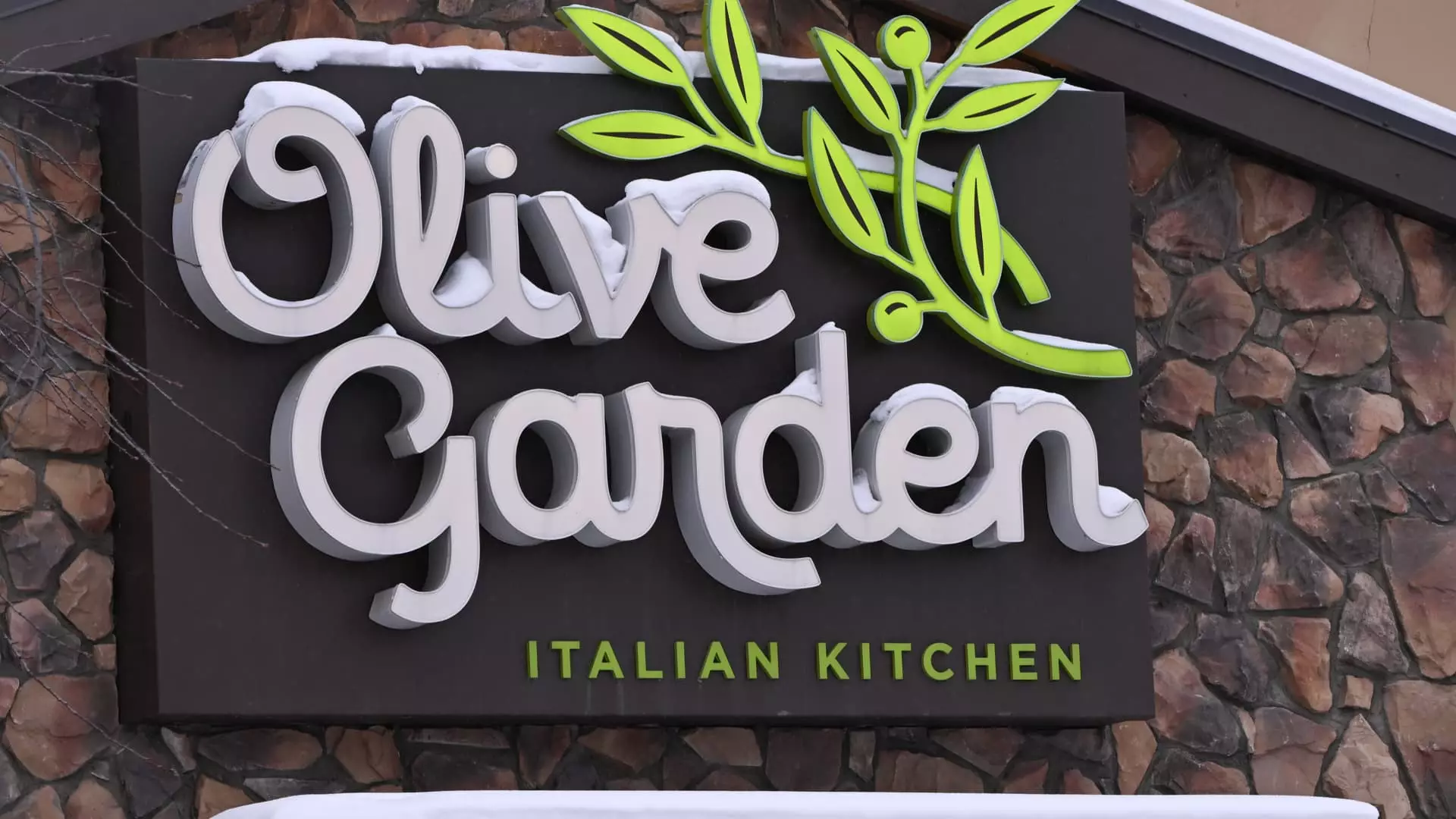Darden Restaurants recently released its quarterly earnings, revealing an unsettling picture that has left both analysts and investors pondering the future. Despite a modest increase in revenue, the company reported results that undershot expectations in key areas. Earnings per share came in at $2.80, slightly higher than the anticipated $2.79, yet revenue of $3.16 billion fell short of the expected $3.21 billion. This paradox highlights the uncomfortable truth that while Darden is managing to stay profitable, its growth is decidedly lackluster. What was once a beacon of hope in the competitive restaurant landscape is now a cautionary tale of stagnation.
Underwhelming Performance of Core Brands
The heart of Darden’s portfolio, namely Olive Garden and LongHorn Steakhouse, did not meet the anticipated growth rates, raising serious concerns about brand vitality. Olive Garden’s same-store sales growth of just 0.6% starkly contrasted with the projected 1.5%, while LongHorn crawled to a disappointing 2.6% increase, far from the 5% that analysts had hoped for. These figures are alarming, considering that these brands have historically been the driving force behind Darden’s success. Such underperformance calls into question whether Darden is effectively resonating with its customer base or simply failing to adapt to a rapidly evolving dining landscape.
Broader Implications for Darden’s Strategy
While Darden’s acquisition of Chuy’s provided a temporary boost in overall revenue, it is evident that the company is relying heavily on acquisitions rather than organic growth. A 6.2% increase in net sales ought to be celebrated, yet it feels hollow when one considers the automotive industry’s broader sales strategies that prioritize innovation over occasional acquisitions. The question arises: is Darden’s reliance on these mergers concealing fundamental weaknesses in its existing offerings? With fine-dining segments reporting a concerning decline of 0.8% and casual dining chains like Cheddar’s Scratch Kitchen witnessing sales shrink by 0.4%, the company’s operational approach is now facing scrutiny.
The Dark Clouds Ahead
Darden’s inability to coax growth from its flagship brands raises red flags about the overall state of casual dining in America. As inflation squeezes consumer spending power and dining habits shift toward more economical and health-conscious options, the rising tide of concerns could drown even the most established of empires. The forecasts signal more cautious positioning for the fiscal year ahead. Darden’s narrowed outlook for adjusted earnings, now projected at between $9.45 to $9.52 per share, paints a worrying picture of what lies ahead on the revenue horizon.
A Call for Transformation
In a climate where innovation is crucial, Darden’s strategic direction appears stagnant. It stands at a crossroads, necessitating a reevaluation of its core offerings and a shift toward engaging consumer preferences. The company needs to ask itself: what value is being created for its customers? Shifting focus from conventional dining to experiences that resonate emotionally could be a game changer. In a saturated market, Darden must infuse freshness into its menu offerings and dining experiences to serve and retain a new generation of patrons.
In essence, while Darden’s past successes should not be dismissed, the current landscape prompts an urgent need for evolution. It’s not too late for Darden to rekindle its flames of growth, but the clock is ticking.

Leave a Reply